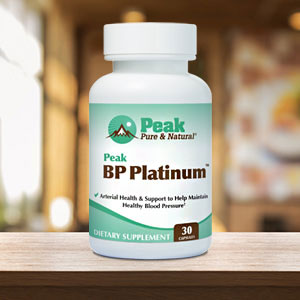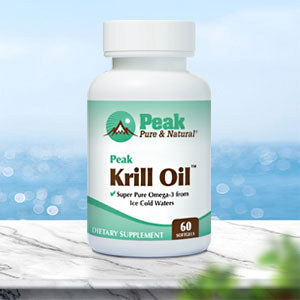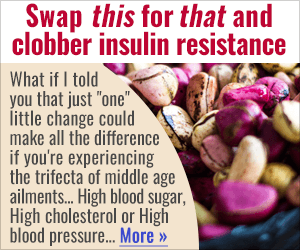Get Easy Health Digest™ in your inbox and don’t miss a thing when you subscribe today. Plus, get the free bonus report, Mother Nature’s Tips, Tricks and Remedies for Cholesterol, Blood Pressure & Blood Sugar as my way of saying welcome to the community!
The condition you won’t find in a long-lived family tree

Do you get leg cramps when you walk even a short distance? Do your legs feel heavy, numb, or weak?
Don’t write these symptoms off as arthritis or “getting older.” Get checked out by your doctor.
It could be claudication, leg pain and leg cramps caused by too little blood flow to the muscles, a sign of peripheral artery disease (PAD).
PAD is not uncommon, yet it often goes undiagnosed.
PAD is like coronary artery disease, except it impacts the blood flow in arteries that carry blood to your legs. Left untreated, it can lead to heart attack and stroke, kidney disease, and even gangrene of the foot, which requires amputation.
Some people are at lower risk of developing PAD than others, according to recent research.
To know if you’re one of them, just take a look at your family tree…
A secret of long-lived families
Researchers from four major universities believe the long-lived secret of families with exceptional longevity may be significantly better vascular health than that of the general population.
My mother lived to be 101, so I could be one of the lucky ones. Hopefully, you are, too.
Using data from the Long Life Family Study, a longitudinal study examining factors contributing to healthy aging and survival, researchers analyzed information on 1,090 long-lived individuals, their 1,554 children and 362 spouses.
Among the oldest participants (average age of 89), about 18% had PAD. But among their children (average age of 60), only 1% had PAD — an amount far lower than the 12% found in other studies.
This suggests that certain protective factors, whether genetic or lifestyle-related, are helping these families to maintain healthier arteries. But that’s not all…
Among known risk factors associated with PAD, including aging, high blood pressure, smoking, use of hypertension medication, cholesterol and diabetes — those last two conditions were not significant risk factors in the study group.
And lastly, they identified four genetic markers associated with protection from PAD… information the researchers hope will help them learn to prevent the condition in people who are less genetically fortunate.
What you can do to avoid PAD
Obviously, you can’t control your genetics or whether you belong to a family where people live into their 90s or die much younger.
But you can control risk factors related to your behavior and your environment…
Getting plenty of omega-3 fatty acids in your diet may help. One study found that for every 1% reduction in an index that measured omega-3s, the odds of being a PAD patient increased by a whopping 39%.
Fatty fish, including salmon and mackerel, are excellent sources of omega-3s. Flax seed, soybeans and walnuts are vegan options. Of course, supplements are also an easy option.
The study I just mentioned also found that, for every additional year of smoking, the odds of having PAD increased by 4%.
Do the math. If you smoke, get help quitting. If you don’t smoke, then don’t start.
PAD is basically atherosclerosis of the legs, so it’s not surprising that other risk factors, including high blood pressure, high cholesterol and diabetes, must be well managed or, better yet, avoided. Diabetes alone can increase PAD risk by 10 times!
The DASH diet can help check your blood sugar, cholesterol and blood pressure. But if your doctor has you on medications, follow their orders.
Remember to move. Physical activity, even just walking, can improve blood flow and reduce the risk of PAD. Lastly, work on maintaining a healthy weight.
So, even if your family tree indicates PAD may be a risk for you, there’s a lot you can do to turn that risk around and start a long-lived branch on your own tree!
Editor’s note: Are you feeling unusually tired? You may think this is normal aging, but the problem could be your master hormone. When it’s not working, your risk of age-related diseases skyrockets. To reset what many call “the trigger for all disease” and live better, longer, click here to discover The Insulin Factor: How to Repair Your Body’s Master Controller and Conquer Chronic Disease!
Sources:
Long-lived families show lower risk for peripheral artery disease — Eureka Alert
New research shows people with PAD could have an omega-3 deficiency — Eureka Alert














